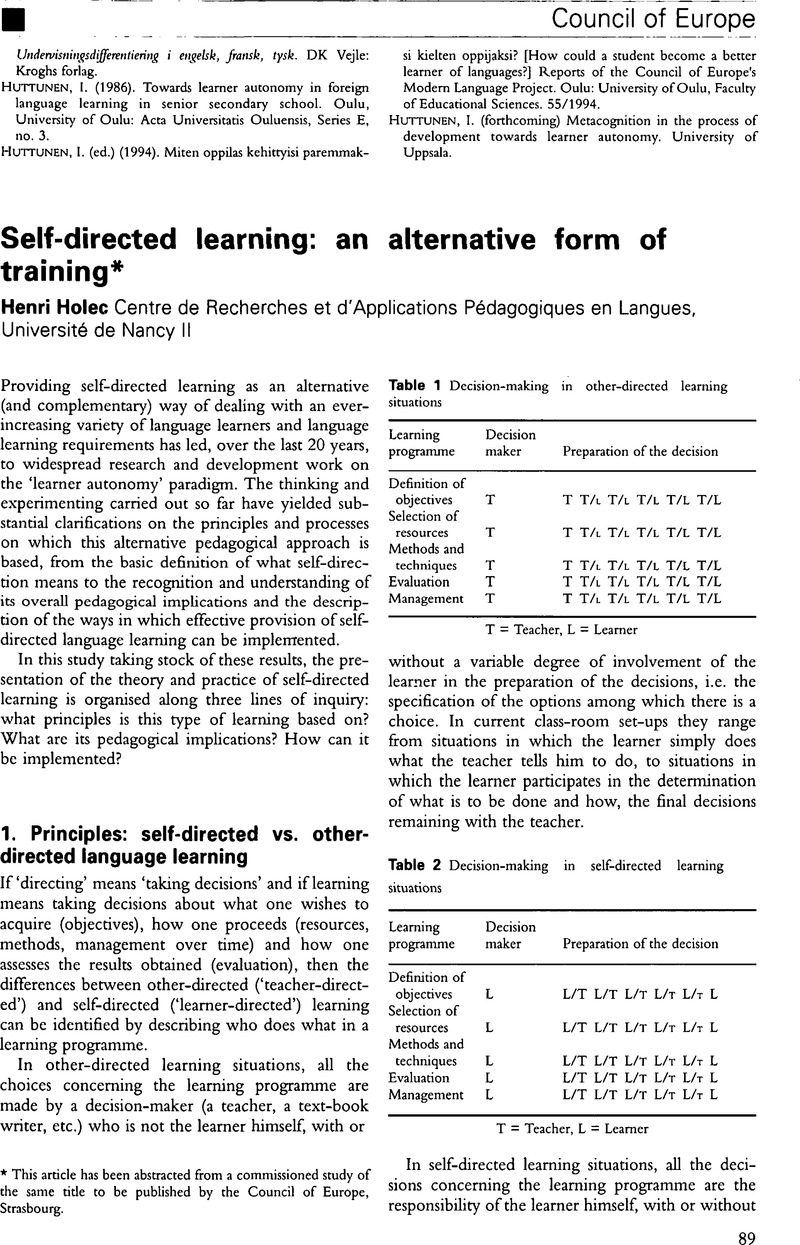Crossref Citations
This article has been cited by the following publications. This list is generated based on data provided by Crossref.
Trim, John
1997.
European perspectives on modern language learning.
Language Teaching,
Vol. 30,
Issue. 4,
p.
226.
Gan, Zhengdong
2004.
Attitudes and strategies as predictors of self‐directed language learning in an EFL context.
International Journal of Applied Linguistics,
Vol. 14,
Issue. 3,
p.
389.
장형지
2011.
Revisiting College TOEIC Course through Self-Directed Language Learning (SDLL).
Journal of the Korea English Education Society,
Vol. 10,
Issue. 3,
p.
1.
Pemberton, Richard
and
Cooker, Lucy
2012.
Psychology for Language Learning.
p.
203.
Özdere, Mustafa
2015.
Foreign langauge instructors' attitudes towards learner autonomy in foreign language learnin.
Pegem Eğitim ve Öğretim Dergisi,
Vol. 5,
Issue. 5,
p.
587.
Chang, Kyung-Suk
Pae, Jue-Kyoung
and
Jeon, Young-Joo
2016.
Instructional Design in the Cyber Classroom for Secondary Students' Basic English Language Competence.
International Journal of Contents,
Vol. 12,
Issue. 2,
p.
49.
McCarthy, Tanya M.
2016.
Exploring Inner Speech as a Psycho-educational Resource for Language Learning Advisors.
Applied Linguistics,
p.
amw001.
Teng, (Mark) Feng
2019.
Autonomy, Agency, and Identity in Teaching and Learning English as a Foreign Language.
p.
1.
Odo, Dennis Murphy
2019.
The Handbook of Informal Language Learning.
p.
421.
Manoïlov, Pascale
and
Divoux-Ringuette, Nicole
2021.
Qualitative analyses of learners’ discourse about their productive vocabulary in spoken interactions.
Lexis,
Nadobnik, Renata
2022.
Początki autonomicznego uczenia się języków obcych na wybranych przykładach samouczków języka niemieckiego dla Polaków.
Applied Linguistics Papers,
Vol. 4/2022,
Issue. 26,
p.
54.
Crezee, Ineke
and
Marianacci, Agustina
2022.
‘How did he say that?’ interpreting students’ written reflections on interprofessional education scenarios with speech language therapists.
The Interpreter and Translator Trainer,
Vol. 16,
Issue. 1,
p.
19.
Barry, Shane
2023.
Finding lost words: The ‘savings effect’ in the Irish language context.
International Journal of Bilingualism,
Vol. 27,
Issue. 4,
p.
504.
Teng, Mark Feng
2024.
Metacognition and autonomy in building a community for language learning through VR digital gaming.
Computers & Education: X Reality,
Vol. 4,
Issue. ,
p.
100060.
Hua, Hong Hieu
and
Le, Thanh Thao
2024.
Enhancing Learner Autonomy and Cultural Awareness: Strategies of Vietnamese Tertiary-Level EFL Teachers.
European Journal of Educational Research,
Vol. volume-13-2024,
Issue. volume-13-issue-4-october-2024,
p.
1519.





